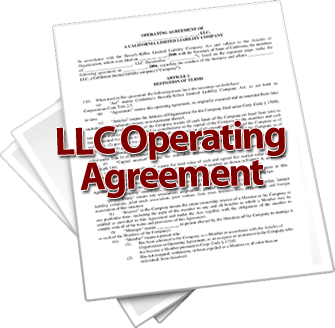Any business venture should have a business structure, whether it is a corporation or an LLC. A structure helps in the organization of the business venture, asset protection of the business owners, and tax planning. Regardless of the structure chosen, there are a number of formalities that any business owner needs to make sure are in place. This is the first in a series addressing these formalities. Because the LLC has more asset protection than a corporation and more flexibility in tax planning, I will address these formalities in terms of an LLC.
The first step in creating a company and in “maintaining” the company structure is to file the appropriate papers in the state where you are going to do business. There is some variation from one state to another in what has to be filed. The papers are commonly known as articles of organization. Some states call them certificates of organization or certificates of formation.
The “Articles of Organization” are a simple two or three page document that you file with your state. Every state lists their papers online. (Links to and instructions for every state in the US are on our website at http://www.legalees.com/state-information/). Your Articles of Organization will include information such as your business name, address, and the names and addresses of the members. Don’t include any more information than is needed on the forms. Anything you provide will be public information once it is filed.
Once you have filled out the form, you will either file it online or by mail, usually with the Secretary of State. Some states have the filings made at a similar office, such as the Department of Business Regulations, State Corporation Commission, Department of Commerce, Department of Consumer and Regulatory Affairs, or the Division of Corporations & Commercial Code. The state website will show which department in that state will be handling the filing.
Information commonly required in the articles of organization include the names of owners, company name, purpose or function of the company, company’s official address, name and address of the registered agent for the company, and other “general information.”
When you describe the purpose of the company, be fairly general. For example, within the realm of real estate, consider using “real estate acquisition and management” rather than specifics like “probate real estate purchases.” You may not end up in just probate real estate; you could end up as a real estate fixer upper operation working with bank owned properties. In the case of a store front shop, use “retail store” rather than “designer shoes,” which gives you some leeway if there ends up being no market for what you originally planned. If you are too specific, you may end up having to amend your articles of organization–and pay the ensuing required fees–because it no longer accurately describes your LLC. But you should also not just put “any lawful activity,” because you could end up having the entire company go in a direction you didn’t intend, which happens too often when there are multiple members (owners) of an LLC.
One of the critical issues that will likely be addressed from the beginning is whether your LLC will be a single member (one owner) or a multi member LLC. Some states are starting to attack single member LLCs and remove their “charging order” protection. So how you decide on this issue is important, because this protection is a big deal, and the state’s treatment of that protection should enter into your decision to form a single member or multi member LLC.
After you have filed your articles of organization (or whatever your state calls them), the state will require a filing fee. This is often referred to as a “franchise fee.” Most states will let you pay for this with a credit card online.
Congratulations!! You now have an LLC. But that doesn’t mean your corporate shield is fully in place. I’ll be addressing what you need to do in this blog and on my YouTube series. Without proper maintenance following ALL the formalities, your LLC may not offer the asset protection or yield the money it could otherwise give you.
I have compiled the contact information to the online information on forming a business for each state in the United States. Find the link to your state here.
Check out my formalities checklist and the corresponding blogs for more information. This article covers the first two items on the checklist:
#1 “Have you read and do you fully understand your Articles of Organization?”
#2 “Have you fully executed and filed your Articles of Organization?”

Great advice! Just getting ready to form my LLC so this is timely info for me. Thanks.